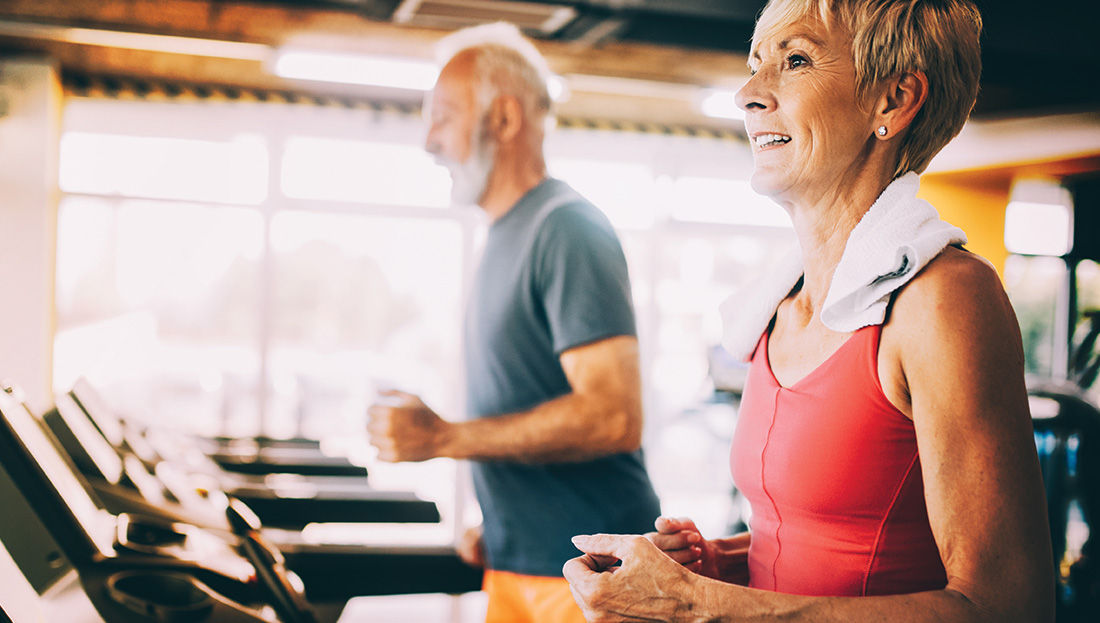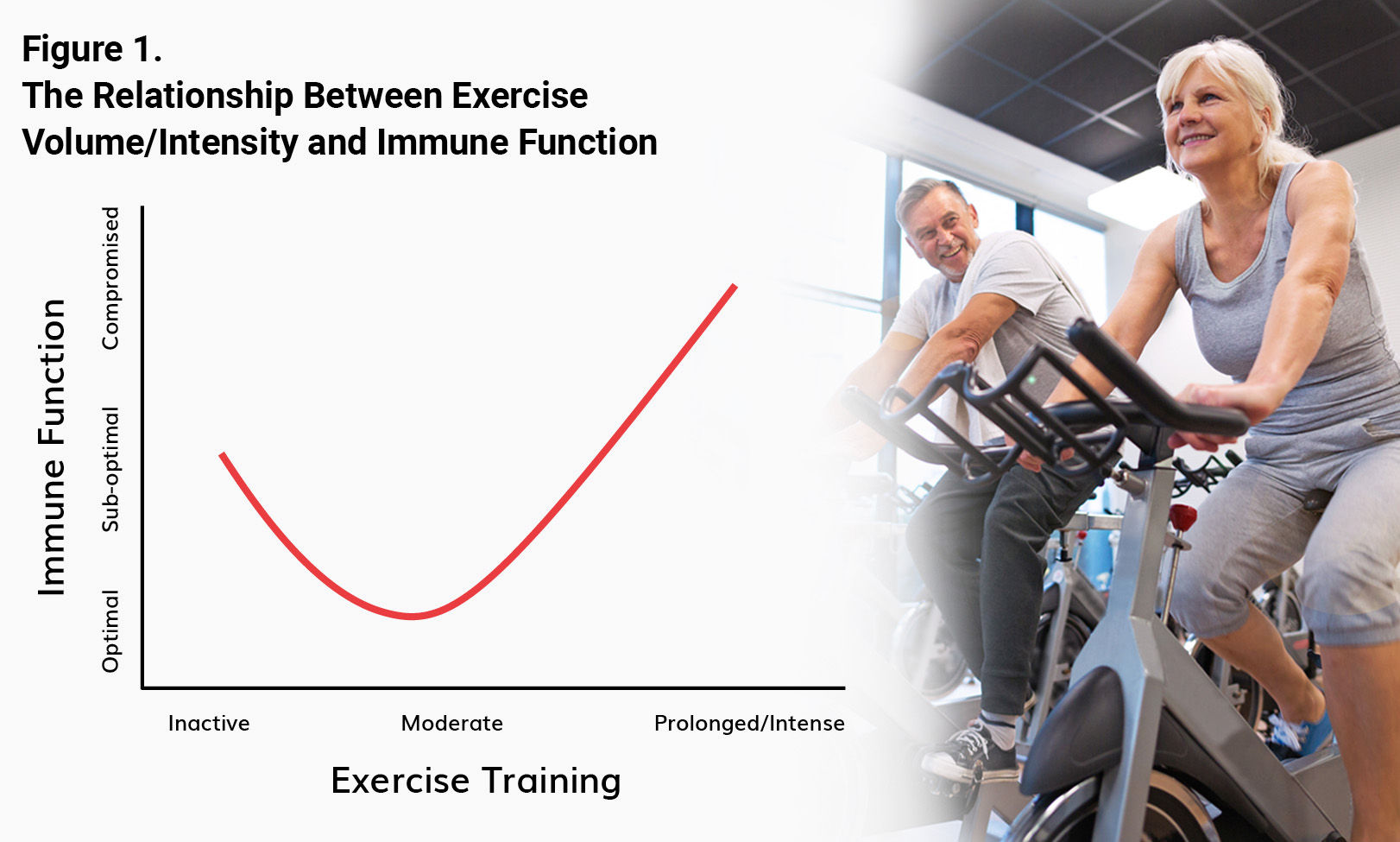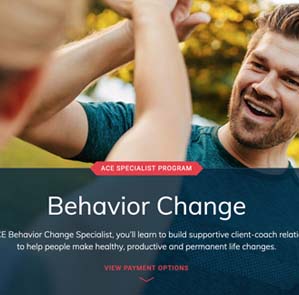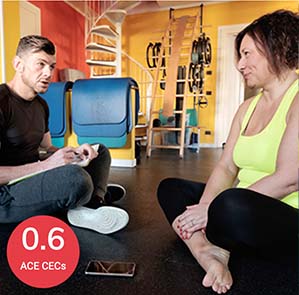
In this series, ACE experts answer your health and exercise questions. From high-intensity interval training to youth fitness, you’ll find detailed answers to many of the questions that may come up in your work with clients. If you have questions you’d like to ask our experts, please email us at Christine.Ekeroth@acefitness.org.
The Expert:
 Lance C. Dalleck, PhD, is an associate professor of Exercise and Sport Science at Western State Colorado University. His research interests include improving exercise performance and health outcomes through evidence-based practice, quantifying the energy expenditure of outdoor and non-traditional types of physical activity, and studying historical perspectives in health, fitness and exercise physiology. Dr. Dalleck is a member of the ACE Scientific Advisory Panel.
Lance C. Dalleck, PhD, is an associate professor of Exercise and Sport Science at Western State Colorado University. His research interests include improving exercise performance and health outcomes through evidence-based practice, quantifying the energy expenditure of outdoor and non-traditional types of physical activity, and studying historical perspectives in health, fitness and exercise physiology. Dr. Dalleck is a member of the ACE Scientific Advisory Panel.
Q: I have several older-adult clients who, in the wake of COVID-19, are reluctant to go back to the gym, but still want the social benefits of exercising in a group. What type of training options do you recommend for these types of clients?
Given the upheaval of the past few years, it’s not surprising that many people are not yet ready to go back to the gym or other indoor exercise spaces. Fortunately, there are many good training options available for those who want to maintain an exercise routine and experience the social benefits of group exercise, while minimizing their risk of COVID-19 exposure. These include a wide range of settings, such as the gym (at certain times of day), online and outdoors. Let’s take a closer look at these options…
Gym-based Exercise Options
As you know, gyms and health clubs have periods when they are packed with people and other times when they are much less crowded. Knowing the times when they might be able to exercise without a lot of people around could make the gym a great option for some of your clients. Erin Smith, an ACE Certified Medical Exercise Specialist and an exercise and sport science lecturer at Western Colorado University, recommends this option for her clients. She also suggests they protect themselves further by “wearing a mask and cleaning the equipment prior and after use.” This option is particularly good for those who benefit from having opportunities to leave the house, but also need to reduce their potential exposure to the virus.
It might also be worth investigating if you can reserve a private room or exercise space at your gym or health club for small-group training. This gives clients the opportunity to exercise in a potentially “safer” environment by limiting their exposure to a specific group. If you don’t have access to a private room or space, Cassandra Henkiel, an ACE Certified Personal Trainer, suggests “finding a nook within your gym where you can create a circuit in which to train your small group, which will keep them working within the designated area. This gives you control of their workout and the social space and environment.”
Online and Home-based Exercise Options
If your client is open to participating in group-based exercise online, you can create home-based, minimal-equipment workouts and deliver them via Zoom or another online platform. There is no limit to the number of participants who can join, and this format offers the potential for social interaction between your participants. “Joining a group fitness class online has been shown to satisfy the need for social interaction with others in your class while also keeping your risk level at zero,” explains Angela Dalleck, ACE Certified Medical Exercise Specialist and an exercise and sport science lecturer at Western Colorado University. ACE has created numerous articles and blogs related to delivering online workouts, and ACE Certified Professionals can find even more guidance and resources in ACE Pro Compass, a new tool that helps professionals navigate their careers through curated content and resources.
I know of many clients who are meeting with a personal trainer in their own homes to keep their exposure level low. As a health and exercise professional, you can take precautions to keep clients safe by limiting your own exposure and also wearing a mask. Additionally, if you have clients who are comfortable being around each other (i.e., within each other’s “bubble”), Smith suggests “facilitating curated group fitness at one of the client's homes. This affords a great opportunity for safe space to socialize and exercise, again reducing risk of random exposures.”
Outdoor Exercise Options
Exercising outdoors is an enjoyable and viable option for those who are concerned about COVID-19 exposure. “An outdoor studio or park can provide a great circuit-training area, with several stations using various pieces of equipment,” notes Henkiel. “This gets your clients in the fresh air and socializing with each other. It can also add considerable variety to their workouts and workout environment.” As a reminder, outdoor exercise in the summer months can be challenging in certain instances, so be sure to take appropriate precautions during warmer weather conditions and when allergies (or poor air quality) are present.
Q: Many of my clients are concerned about boosting their overall health and immunity to avoid getting COVID-19. Can you provide specific guidelines for exercise that is particularly good for boosting immunity?
Fortunately, this is a fairly straightforward question to address with respect to specific guidelines for exercise. The widespread physical activity recommendation from major health organizations of 30 minutes of moderate-intensity aerobic exercise on most days of the week has been linked to positive immune function.
As health and exercise professionals, we are all well-aware that high-intensity interval training (HIIT) has been a popular exercise training paradigm for over a decade now. The relationship between HIIT and immune function is an interesting one. The acute effects of HIIT induce a transient reduction in immune cell count and function. The extent of reduced function is related to the HIIT type. However, regular HIIT results in overall favorable adaptations to the immune system.
How can you best manage these somewhat conflicting acute and chronic immune responses to HIIT? Here are some quick strategies:
- The reduction in immune function following HIIT is a transient phenomenon and generally lasts no longer than several hours. During this timeframe, clients can ensure other factors related to immune function are being addressed. For example, low stress, optimal nutrition and adequate sleep all contribute to positive immune function. Adequately addressing these other lifestyle factors following a workout and throughout the day can help to minimize the overall impact of HIIT on the immune system.
- It is important to highlight that the volume and intensity of HIIT will influence the extent of decline in post-exercise immune function. As such, avoiding longer HIIT workouts or supramaximal intensity HIIT is recommended. For this reason, reduced-exertion high-intensity interval training (REHIT) is an excellent high-intensity training option.
- If HIIT or REHIT has not previously been part of your client’s exercise training program, you may want to avoid introducing it—at least for the time being—given the potential for immune function reduction.
Avoiding overtraining is crucial for preserving immune system function. As highlighted in Figure 1, there is J-shaped relationship between exercise volume/intensity and immune function. An inactive lifestyle contributes to suboptimal immune function, moderate amounts and intensities of exercise elicits an optimal sweet spot for immune function and performing higher volumes and intensities of exercise (i.e., overtraining) carries with it an increased risk of compromised immune function.

Expand Your Knowledge
 |
As an ACE Behavior Change Specialist, you’ll learn to build supportive client–coach relationships to help people make healthy, productive and permanent life changes.
|
 |
Effect and inspire positive lifestyle change within your clients by applying behavior change strategies. Learn the latest techniques and strategies to work more effectively with your clients so they can establish healthy habits that last a lifetime.
|





 by
by 

 Lance C. Dalleck, PhD, is an associate professor of Exercise and Sport Science at Western State Colorado University. His research interests include improving exercise performance and health outcomes through evidence-based practice, quantifying the energy expenditure of outdoor and non-traditional types of physical activity, and studying historical perspectives in health, fitness and exercise physiology. Dr. Dalleck is a member of the ACE Scientific Advisory Panel.
Lance C. Dalleck, PhD, is an associate professor of Exercise and Sport Science at Western State Colorado University. His research interests include improving exercise performance and health outcomes through evidence-based practice, quantifying the energy expenditure of outdoor and non-traditional types of physical activity, and studying historical perspectives in health, fitness and exercise physiology. Dr. Dalleck is a member of the ACE Scientific Advisory Panel. 



